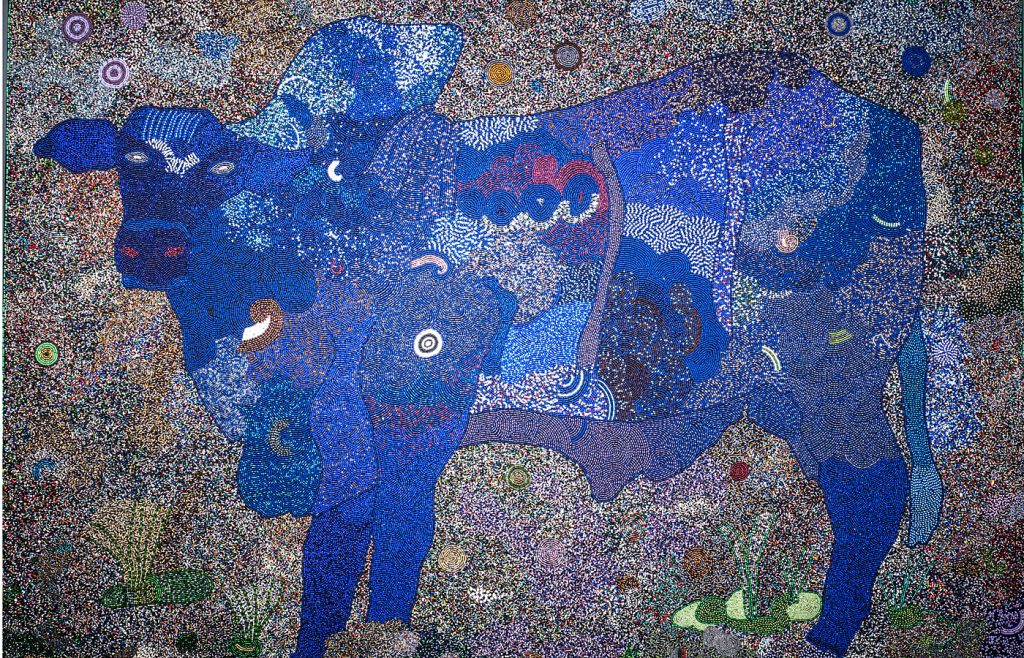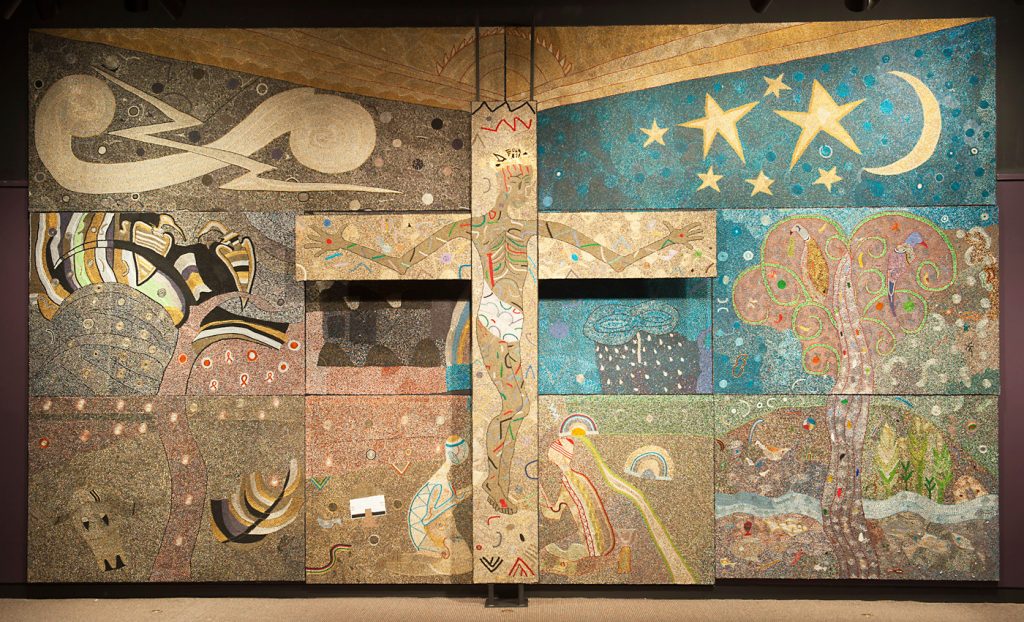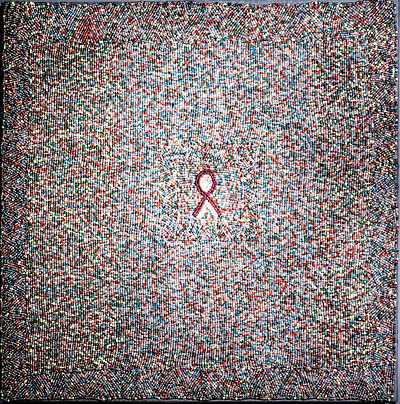
The National Czech & Slovak Museum & Library may seem an unlikely site to host South African contemporary art, but this summer in Cedar Rapids, visitors to the museum will be able to see just that in Ubuhle Women: Beadwork and the Art of Independence. The exhibition originally debuted in 2013 at the Smithsonian Anacostia Community Museum in Washington, D.C.
Ubuhle, the name of an artist community in rural South Africa, translates to “beauty,” which can only begin to describe the group’s intricate beaded artwork. Each piece comprises thousands of tiny colored glass beads from the Czech Republic, a country famous for its glasswork. Artists sew these Czech beads onto large panels of black fabric in intricate figurative and geometric designs. Creating and selling their own artwork allows the artists to provide for themselves and their families in an area where financial independence of this magnitude is rare. It also gives them the freedom to work from home and take care of their children. The content and symbolism in their art often reflects this deep connection to family through narratives of hope, love, and nurture.

Upon entering the museum’s grand hall, visitors face the largest of these works, The African Crucifixion, a monumental piece over 15 feet tall and 22 feet wide. One cannot begin to fathom how many beads these artists used over the course of ten months as they constructed this astonishing masterpiece. Although the artists typically work in distinguishable styles, here they functioned as a collective to make 12 harmonious panels.
From a distance, the artwork appears to be a massive painting that glitters under the lights. Under closer inspection, the individual beads reveal themselves and divulge the impressive effort and skill that went into making the work.
How many beads are sewn into a square inch? “I see the forest not the trees,” says Beverly “Bev” Gibson, a co-founder of Ubuhle. Bev arrived in Cedar Rapids on May 10, and over the course of two days trained museum staff and volunteers so they can share the moving stories behind each work.

For example, five of the pieces in the exhibition portray cattle, an integral source of wealth in South African society. The indigenous cattle of South Africa, much larger than their American counterparts, are well known for being gentle and friendly giants. When mother cows are caring for their young, however, they become very protective and dangerous. The artists feel a strong affinity toward these mother cows, in which they see a reflection of their own passion for family. When Bev described the women’s drive to create art, she pointed out that a prime motivation is a desire to provide for their children as well as adopted children who have been orphaned by the AIDS epidemic. Through the sale of their artwork, they are able to support not only their immediate families but also whole communities.
Beadwork in South African indigenous communities is a traditional craft often designated to women. Ntombephi “Induna” Ntobela, the first artist and co-founder of Ubuhle, learned to bead from her mother. She took that traditional skill and transformed it into a medium for contemporary art, one now recognized by the Smithsonian and other elite American art museums as fine art.
Despite their expertise in design, the artists do not sketch their pieces first. The women believe that because they cannot write, they cannot draw. If they do want a drawing to begin with, as is the case for the pieces representing cattle, they have their children create the basic outline for them. They believe that because their children go to school and learn to write, they are more capable of drawing, even at the young age of eight.
Given that these women so deeply embody the dedication of motherhood, it was fitting that the Ubuhle exhibition opened Mother’s Day weekend. Their work is imbued with the idea that we carry the lessons and strengths of our mothers before us and continually pass those lessons down to the children that follow.
Ubule Women will be on exhibit through September 17. Jewelry made by the Ubuhle community will be available in the NCSM store through the summer, with all proceeds going to support the artists and their communities. For more information about the project or to commission your own beaded painting, visit UbuhleBeads.co.za/
